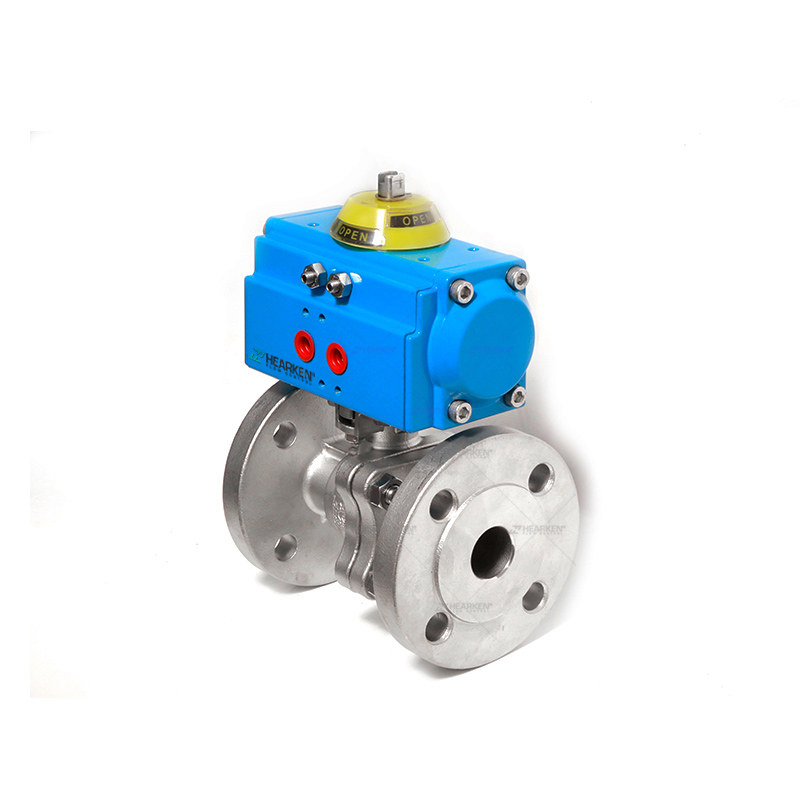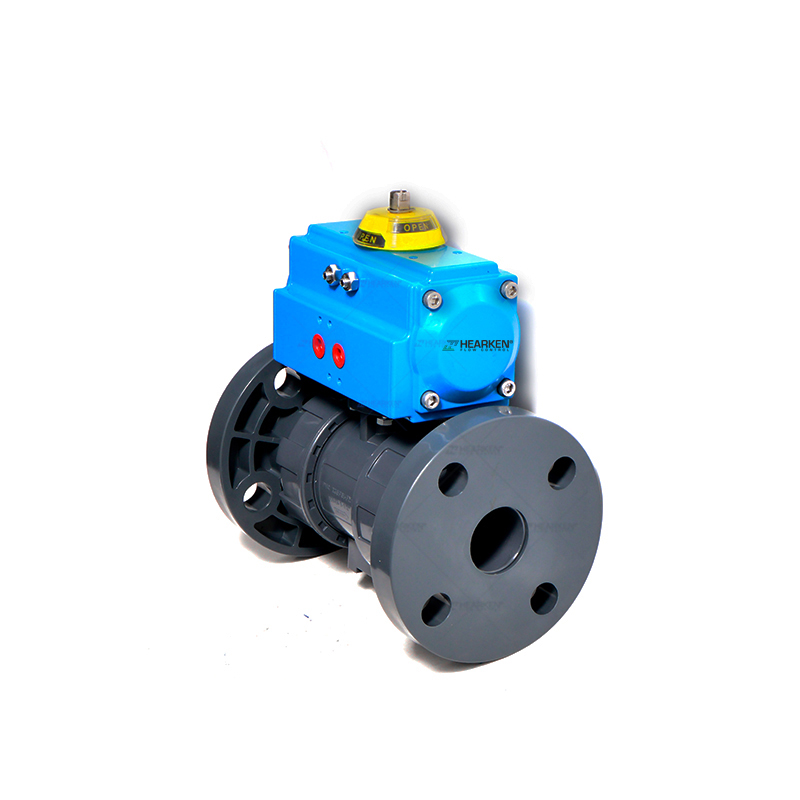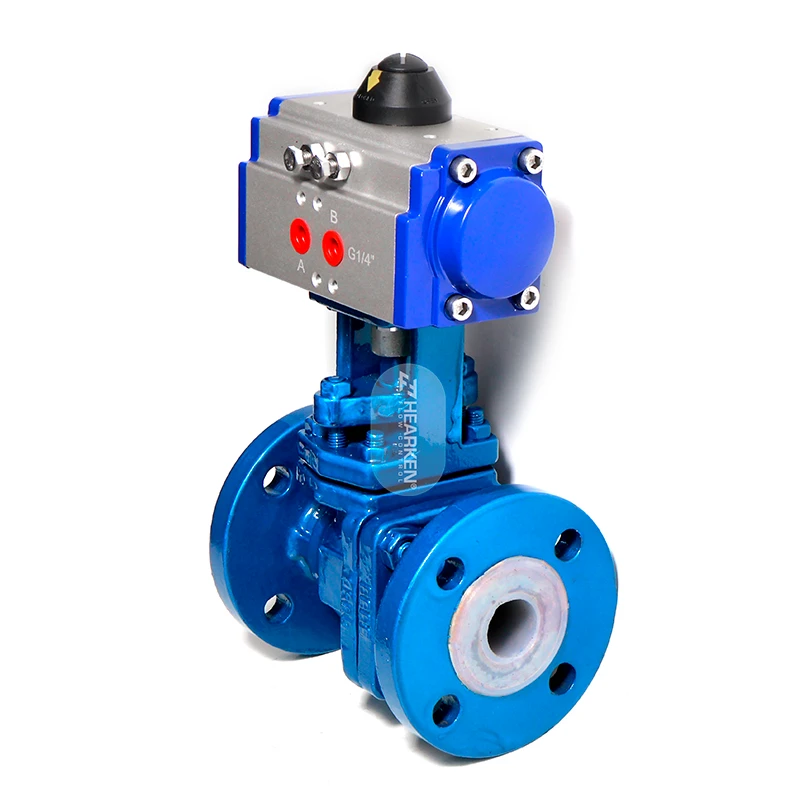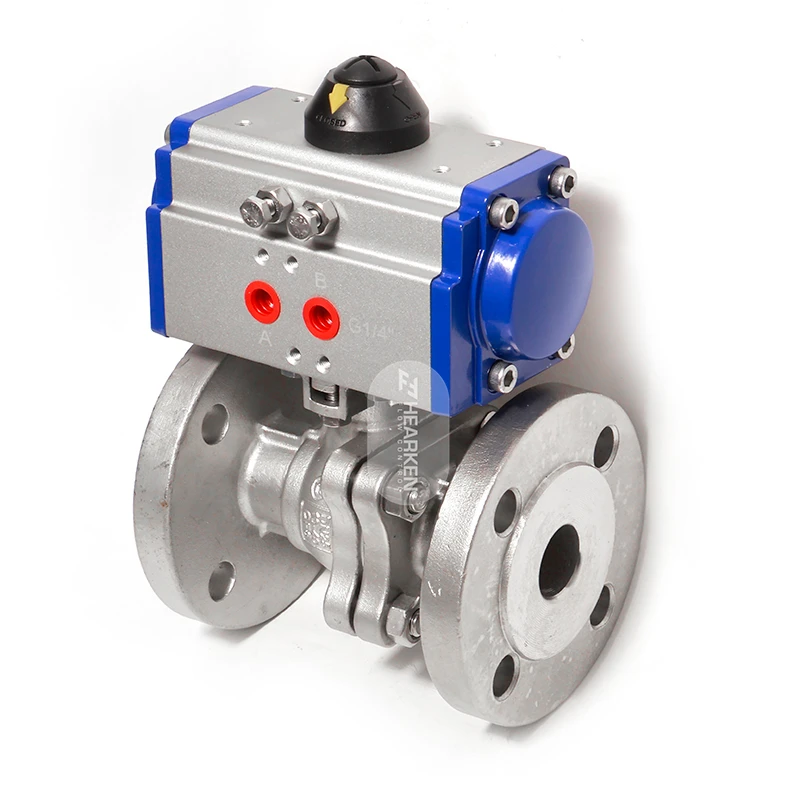Flanged Ball Valve
Three Way Pneumatic Actuated Flanged Ball Valve
Discover our 3-way pneumatic actuated flanged ball valve, designed for seamless flow con
What is a flanged ball valve?
A flanged ball valve is a type of valve that uses a ball with a hole through its center to control the flow of fluids. It belongs to the quarter-turn valve family, which means the valve operates from a closed to an open position with a 90-degree turn of the valve handle.
What are the different types of flange valves?
Flange valves are integral components in various industries, facilitating efficient, reliable flow control in piping systems. These valves are characterized by their method of connection to the pipe—using flanges, which are external ridges or rims. This allows for easy installation and maintenance. Here’s an overview of the primary types of flange valves, highlighting their applications and unique features:
1. Ball Valves
- Description: Utilize a ball with a central bore that controls fluid flow.
- Advantages: Provide excellent shut-off capabilities and are suitable for both on/off and throttling services. Their quarter-turn operation allows for quick and easy operation.
2. Gate Valves
- Description: Feature a flat gate which is raised or lowered using a handle or actuator.
- Advantages: Ideal for applications requiring a straight-line flow of fluid with minimal restriction. Typically used in on/off control rather than flow regulation.
3. Globe Valves
- Description: Contain a movable disk-type element and a stationary ring seat in a generally spherical body.
- Advantages: Excellent for regulating flow. The design allows for precise throttling but causes more pressure drop than ball or gate valves.
4. Butterfly Valves
- Description: Use a rotating disc to control the flow inside the pipeline.
- Advantages: Compact and lightweight, they are less expensive than other types and easy to install. Suitable for handling large flows of liquids or gases.
5. Check Valves
- Description: Allow fluid to flow in one direction only, preventing backflow.
- Advantages: Essential for preventing reverse flow which could potentially damage pumps or compressors.
6. Plug Valves
- Description: Feature a cylindrical or tapered plug with a hole in the center that opens and closes to control flow.
- Advantages: Simple design and robust performance, particularly effective in high-pressure environments.
7. Diaphragm Valves
- Description: Use a flexible diaphragm that seals against a seat located at the top of the valve body.
- Advantages: Particularly useful in applications involving corrosive fluids, slurries, or other media where contamination is a concern.
What is the difference between a ball valve and a flanged ball valve?
- Ease of Maintenance: Flanged connections allow for easier access for maintenance since the valve can be removed from the pipeline without disturbing the adjacent pipework, unlike threaded or welded connections.
- Versatility: Flanged ball valves are more versatile for larger and more complex industrial systems due to their strength and durability under high pressure and volume conditions.
- Installation Requirements: Installing a flanged ball valve generally requires more space around the piping system to accommodate the flanges, and the initial installation might be more labor-intensive due to the bolting process required.
Why Choose Flanged Ball Valves?
Choosing flanged ball valves offers several significant advantages, particularly for industrial applications where reliability, ease of maintenance, and durability are critical. Here are the key reasons why flanged ball valves are often the preferred choice:
1. Easy Installation and Maintenance
Flanged ball valves are designed with a bolted flange connection, making them easier to install and remove from a pipeline system. This design facilitates quick disassembly for maintenance, repairs, or replacement without the need to cut the valve out of the line, saving both time and labor costs.
2. High Integrity Sealing
The flange connection provides a robust and high-integrity seal that can withstand high pressures and temperatures. This sealing capability makes flanged ball valves ideal for critical and severe service applications where leakage must be minimized.
3. Versatility in Applications
Flanged ball valves are versatile in their usage across various industries, including oil and gas, chemical processing, water and wastewater treatment, and manufacturing. Their ability to handle different types of media (liquids, gases, and even slurries) and operate effectively under different environmental conditions makes them suitable for a broad range of applications.
4. Durability and Longevity
Constructed typically from high-grade materials like stainless steel, carbon steel, or specialized alloys, flanged ball valves are built to last. They are designed to endure corrosive environments, high pressure, and extreme temperature variations, ensuring long-term reliability and performance.
5. Safety and Reliability
The robust design of flanged ball valves also contributes to enhanced safety. The secure flange connection helps prevent blowouts or leakage, which are critical in high-pressure applications. Their reliable performance reduces the risk of downtime and enhances overall system safety.
6. Regulatory Compliance
Flanged ball valves can be designed to meet various international standards and certifications such as ISO 9001, API (American Petroleum Institute), and ASME (American Society of Mechanical Engineers). This compliance is essential for industries that must adhere to strict safety and quality guidelines.
7. Customization Options
These valves often offer options for customization in terms of size, material, and flange type, allowing them to be tailored to specific requirements of a piping system or project. This adaptability ensures that they can meet specific engineering specifications and performance criteria.
8. Cost-Effectiveness
Despite the initial higher investment compared to other connection types, the ease of maintenance, longevity, and reliability of flanged ball valves often lead to a lower total cost of ownership over the valve's lifespan.










